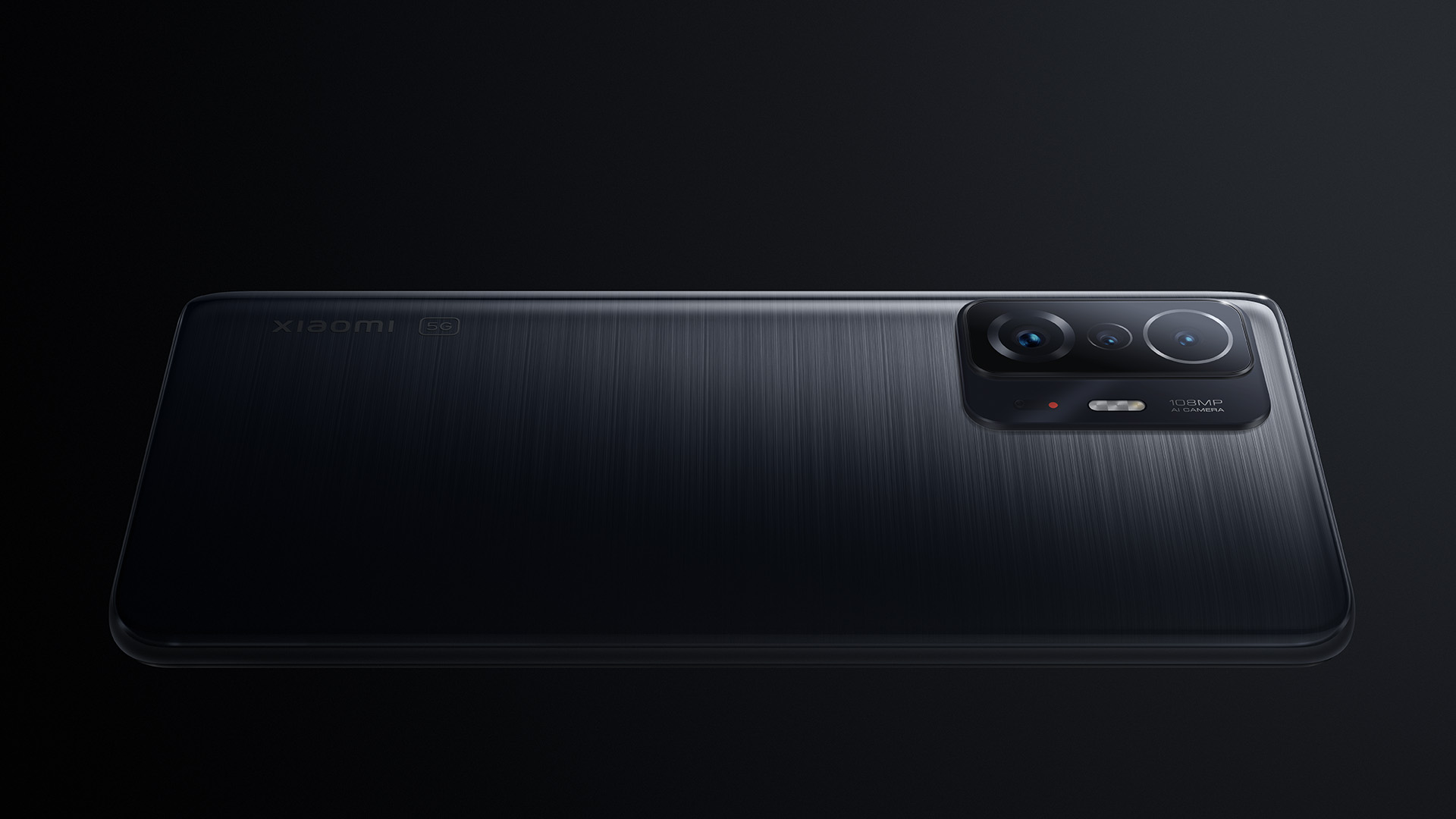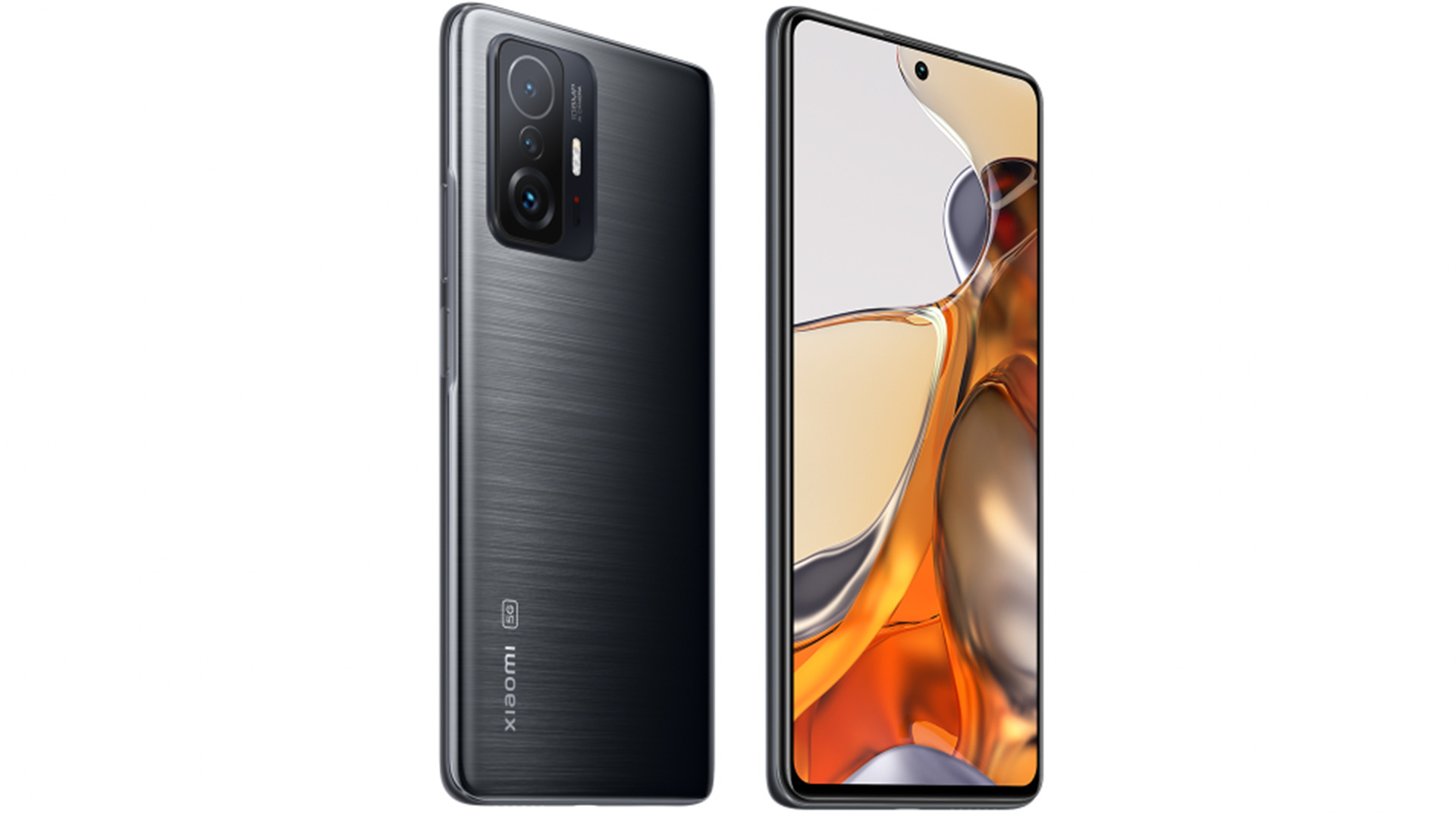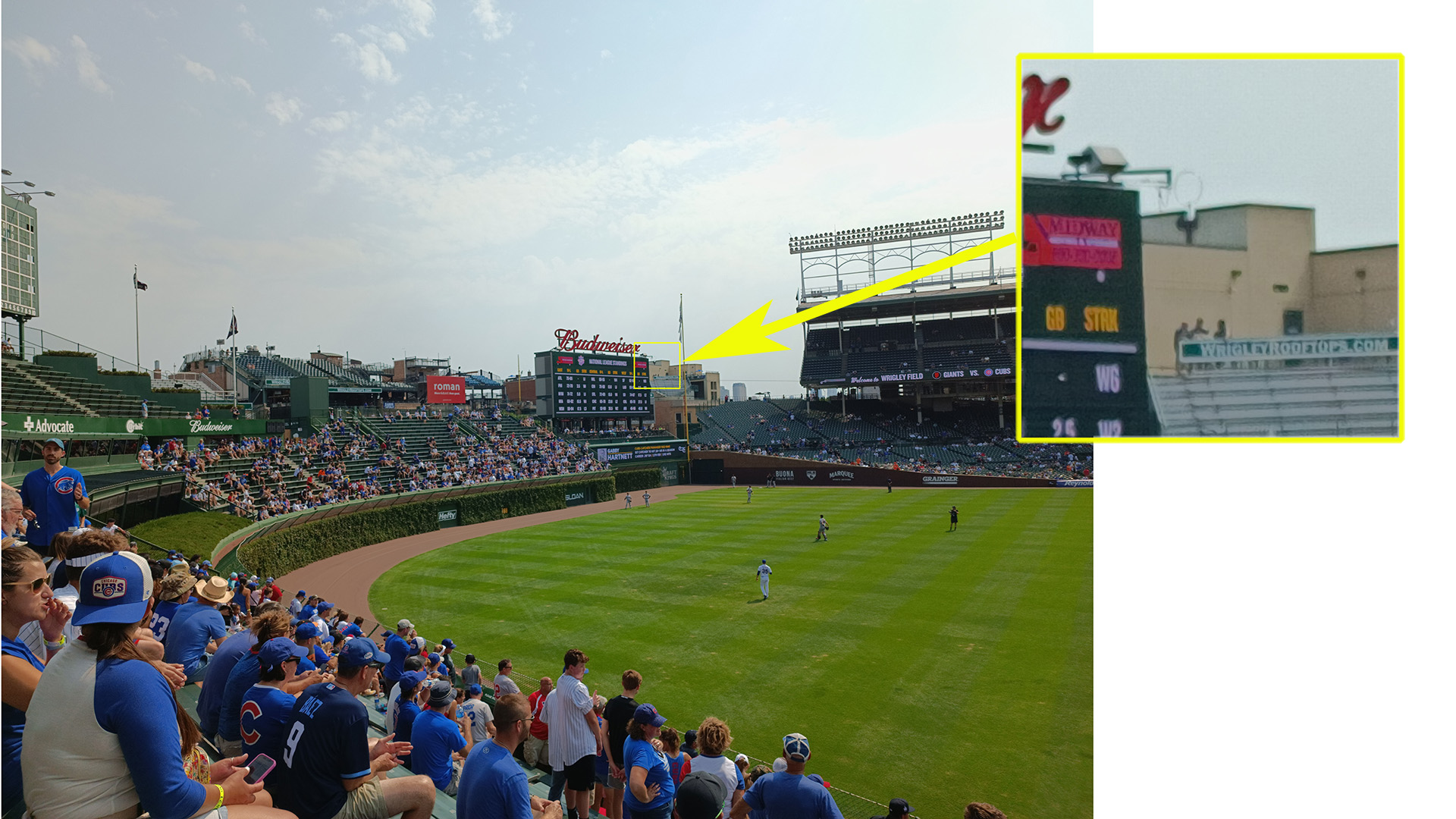Xiaomi 11T review: an image-focused performer
The Xiaomi 11T is an impressive phone for photo and video fans for an affordable price


While the Xiaomi 11T does offer a reduced spec from the Mi 11, you would hardly notice. For anyone looking for a solid smart phone upgrade, it performs in the right areas, especially when it comes to photo and video.
-
+
Great screen
-
+
Powerful camera array
-
+
Impressive fast charging
-
-
No long zoom camera
-
-
Slippy rear surface
-
-
Fingerprint sensor on the button can be pressed accidentally
Why you can trust T3

The latest Xiaomi phone launch delivered three new models to the range, including the Xiaomi 11T. The T designation usually provides a slightly downscaled or mid-range version of the phone, but this can sometime mean that you can get a product that’s almost as good as the flagship for less cash. That seems to be the case with the Xiaomi 11T. While there are some notable changes from the Mi 11 – including now losing the Mi in the name on all models – this is still an impressive phone, making it a contender for our best cheap smartphone list.
Instead of the Qualcomm Snapdragon 888 processor, the Xiaomi 11T uses a MediaTek 1200-Ultra chip. It still offers a three-camera array on the rear, including a 108MP main lens, though the ultra-wide and front camera are low resolution. The screen is also smaller and less resolute but is still an AMOLED with 120Hz refresh rate.
The question here is not whether this model is better, but whether you really notice the differences and if they are worth the difference in price.
Xiaomi 11T review: Price and release date
The Xiaomi 11T, along with the Xiaomi 11T Pro and Xiaomi 11T Lite were launched on September 15, 2021. The phone is priced £499 in the UK for the 8GB RAM model with 128GB storage and £549 for the 256GB version. The phone is not officially available in the US but, like previous models, will be made available through importers. I suspect the price will sit around the $500 mark when it appears.

Xiaomi 11T review: Design and screen
The under-screen fingerprint sensor drew some criticism in the Mi 11, so I imagine many users will be happy that this has returned to a button – as it was in the Mi 10T. However, this function can sometimes be too good. I found a few times that I accidentally unlocked the phone again while putting it in my pocket (as I gripped around the button), which caused a range of searches and almost posted a few Tweets. In time I’m sure I’d learn to move my index finger but it’s a learning process – and one of the occasions when I really missed Face ID.
The front display lacks the curved screen of the Mi 11, instead offering a flat 6.67-inch AMOLED display. This has an FHD+ (2400x1080) resolution, which is significantly lower than the 3200x1440 on the Mi 11. At 800 nits standard, or 1000 nits peak, it’s also not quite as bright. The plus side here is that it still has a 120Hz refresh rate and adaptive sync (though only between 60Hz and 120Hz).
The screen also offers an always on function that can display the date, time, battery life and show notification icons. This is really handy as it avoids having to press a button to check the time or what has caused the latest ding or vibrate.
Get all the latest news, reviews, deals and buying guides on gorgeous tech, home and active products from the T3 experts
The rear of the phone is much more familiar. It retains the curved design and comes in a choice of three colors: Meteorite Gray, Moonlight White and Celestial Blue. The model I received was the Meteorite Gray, which has a shiny finish that you can see you face in (should you wish to take a selfie this way). The downside is that it shows up fingerprints and smudges easily. It also tends to slide off any surface that isn’t completely flat. I’ve watched the phone slowly slide off my notepad multiple times.
The camera array is now in a longer form, with the three lenses stacked vertically, while the sensors and LED flash sit to their right. There’s still a significant bump here, though no more than on, say, the iPhone 12 Pro. The bump is two-stage though – with a small rise for the whole array and a second rise for the main camera lens area.
The supplied see-through rubber case solves the sliding issue and minimizes how much the camera bump stands out, but it also makes the phone feel much bulkier, and I preferred its handling without the case.
The curved back panel helps make the Xiaomi 11T feel smaller than it is, and its balance makes it pretty easy to operate with one hand. This is impressive for a phone with such a large screen. My hand naturally landed on the power on button, which thanks to the in-built fingerprint sensor in the button, automatically unlocked the device.

Well controlled HDR in affect
Xiaomi 11T review: Camera
The front facing camera has been centered on the Xiaomi 11T and sits as a rather large punch hole in the display. As this sits among the array of notifications, signal bars and battery life though, when the screen is on you soon forget it’s there. This camera is a 16MP unit with an f/2.45 aperture – another step down from the 20MP f/2.2 model on the Mi 11.
The images look nice enough, though the wide-angle nature of the lens does give some distortion, especially in the vertical direction at close range. With an arm fully stretched this isn’t an issue.
Though the rear cameras have also seen a downgrade, the important features are still here – namely the 108MP main camera and the 2x tele macro. The 108MP main camera uses a 9-in-1 pixel arrangement to create a 12MP image (3000 x 4000 pixels) for general use but by selecting the 108MP mode, it will retain the full 9000 x 12000-pixel image. This can be a useful feature if you need to crop in but on most occasions, you are better using it in the 12MP mode, not least because the image will look better, with less haloing and compression visible.
The 8MP ultra-wide-angle lens gives a handy 120-degree field of view for those big landscapes, group shots or, in my case, attempts to capture the whole of Wrigley Field in one image. There’s a little distortion at the edges but nothing severe.
The third camera is the same 5MP telemacro as featured on the Mi 11. It provides a 2x magnification and focuses down to 1.18 inches (3cm). The results are impressive at this distance, allowing you to get creative – though you do need lots of light, otherwise the images can get very noisy. I used this camera to scan in a negative on a light box and it worked pretty well.
There are a wide range of features in the camera app to help you create better photos and video. I really like the Pro setting, which lets you manually set everything, from the white balance to the focus. A ‘More’ option reveals options such as night mode, time lapse, panorama and video functions such as VLOG, dual video and a bunch of movie effects, that include magic zoom and time freeze. Some of these options must be downloaded before use but offer both useful and fun creative options. The night mode does a great job at brightening a scene and while some options feel a bit cheesy, there’s a lot to work with.
There’s no 8K video option on the Xiaomi 11T but it will shoot in 4K at 30fps or 1080P at 60fps. Plus, if you choose the slow-motion option, you can do up to 960fps in 720P.




Xiaomi 11T review: Battery life
One nice improvement on the Xiaomi 11T is the battery. This is a 5000mAh unit (rather than a 4600mAh) so it lasts longer. I found that with regular use it could last up to two days, and if you turn on some of the battery saver functions in the menu, it can be much longer still. Though not as long as it claims – with just 4% left and less than an hour before it was due to die, I turned on the battery saver that promised another 18 hours. The battery was out in less than five.
Thanks to the 65W charger that comes in the box, it charges quicker too. Even using a travel adaptor to plug the supplied euro-style plug into a 110V US socket, I went from zero to 100% in less than 35 minutes. It’s a simple thing but the graphics while it’s charging look pretty cool too, with a stream of electricity shown coming from the charging point to the percentage charged value on the display.
Xiaomi 11T review: Other features
Perhaps the most interesting feature of the Xiaomi 11T is the MediaTek processor. It’s the only one of the three new 11T models to use MediaTek as opposed to Qualcomm Snapdragon processors (the 11T Pro uses the Snapdragon 888 while the 11T Lite uses the 778G).
The MediaTek Dimensity 1200 is a 5G chip that offers eight cores and up to 3GHz clock speeds. It lacks the Snapdragon 888’s ability to support 8K video and higher refresh rates on QHD displays, which is why the resolution is lower and 8k video is missing here. It’s also slower more battery intensive, hence the larger battery.
In addition to 5G, the Xiaomi 11T also offers Bluetooth 5.2 and Wi-Fi 6 connections. There’s NFC and an IR beam for remote functions and a dual SIM slot to allow for two lines (in some regions).
In use, the Xiaomi 11T feels nippy without any signs of lag. There are still some issues here associated with the MIUI skin that runs on top of Android, but MIUI 12.5 is definitely an improvement and allows you to uninstall and disable those Mi apps that you don’t want to use.
Xiaomi 11T review: Verdict
Though it’s not quite the phone that the Mi 11 is, the Xiaomi 11T is a great performing device that is more than enough for most users. It also includes a couple of really nice features that elevate it from your standard mid-priced smartphone – namely the camera array and fast charge.
You really can create some nice images and video with ease on this phone, and there’s tons of options to play with. Also, knowing that you can charge it up in such a short time really gets rid of that battery anxiety.
If you want top performance the Xiaomi Mi 11 Ultra provides that but if you need a phone that is reliable and offers some creative abilities, the Xiaomi 11T is well worth considering.
Xiaomi 11T review: Also consider
Perhaps the Xiaomi 11T’s biggest competitors are the other Xiaomi models. Right now, the slight superior Mi 11 is discounted to £599 – just £100 more than the 11T, which for the added features is probably worth it.
The Samsung Galaxy S20 FE also comes in for a similar price to the 11T. This offers a comparible display, with 120Hz refresh and a solid triple camera array on the rear. It alos uses the Snapdragon 865 processor.
Following the launch of Apple’s new iPhone 13, the iPhone 11 is now selling for under £500, or if you’re happy with a smaller screen, the iPhone 12 mini is just £579. Side by side on specs, neither of these devices can stand up to the Xiaomi 11T, but they are great phones in their own right with excellent camera systems.

As T3's Editor-in-Chief, Mat Gallagher has his finger on the pulse for the latest advances in technology. He has written about technology since 2003 and after stints in Beijing, Hong Kong and Chicago is now based in the UK. He’s a true lover of gadgets, but especially anything that involves cameras, Apple, electric cars, musical instruments or travel.